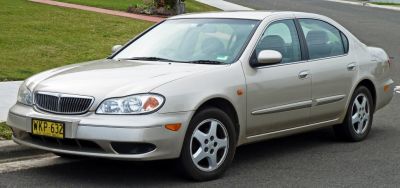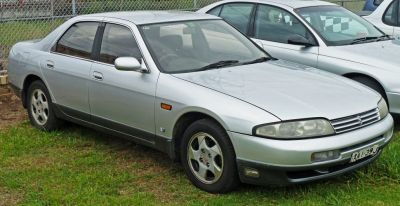 1991 Toyota Camry III (XV10) Dimensions, Size & Specs
1991 Toyota Camry III (XV10) Dimensions, Size & Specs
Measurements of the 1991 Toyota Camry III, engineered for optimal performance and comfort
| Dimensions | |
|---|---|
| Length: | 4725 mm186.0 in15.5 ft |
| Width: | 1770 mm69.7 in5.8 ft |
| Height: | 1420 mm55.9 in4.7 ft |
| Trunk Capacity (Max): | 517 liter18.3 cu ft |
| Weight Specifications | |
| Curb Weight: | 1355-1595 kg2987-3516 lbs |
| Maximal permitted Weight: | 1820-1930 kg4012-4255 lbs |
| Roof Load: | 100 kg220 lbs |
| Tire Specifications | |
| Rims Sizes: |
|
| Tire Sizes: |
|
The 1991 Toyota Camry III (XV10) represents the third generation of the popular mid-size sedan, produced between 1991 and 1996. This generation marked a significant evolution in design and engineering, offering a roomy and comfortable interior with practical features well-suited for families and daily commuting.
In terms of size, the Camry III measures 4725 mm (186 inches) in length, with a width of 1770 mm (69.7 inches). Its height ranges slightly between 1415 mm and 1420 mm (55.7 to 55.9 inches), giving it a balanced profile that combines aerodynamic efficiency with interior space. The curb weight of this generation varies from 1355 kg to 1595 kg (approximately 2987 to 3516 pounds), depending on trims and optional equipment, contributing to a stable yet responsive driving experience. The maximum gross vehicle weight ranges between 1820 kg and 1930 kg (about 4012 to 4255 pounds).
One notable feature of the 1991 Toyota Camry III is its luggage capacity. With the rear seats folded down, it offers a generous cargo volume of 517 liters (18.3 cubic feet), allowing ample space for belongings, groceries, or travel gear. The roof load capacity is rated at 100 kg (220 lbs), enabling the installation of roof racks for additional storage needs.
The car comes equipped with either 14- or 15-inch rims, paired with tire sizes of 195/70 R14 or 205/65 R15 respectively. These sizes contribute to a smooth ride quality and dependable handling characteristics for daily driving.
Overall, the Toyota Camry III (XV10) sedan presents a well-rounded package with practical dimensions, solid build quality, and user-friendly features. Its size and weight offer comfortable interior space while maintaining manageable road manners, making it a favored choice in the mid-size sedan segment throughout the early 1990s.
Discover the standout features that make the 1991 Toyota Camry III a leader in its class
Have a question? Please check our knowledgebase first.
The Toyota Camry III (XV10) measures 4725 mm (186.0 inches) in length, making it a mid-size sedan with ample cabin and trunk space. Its width spans 1770 mm (69.7 inches), offering a stable and comfortable driving experience. The height varies slightly between 1415 mm and 1420 mm (55.7 to 55.9 inches), depending on specific trim and suspension setups. These dimensions give the Camry XV10 a balanced stance on the road, suited for both urban and highway driving while providing good interior space for passengers.
The curb weight of the Toyota Camry III (XV10) ranges from 1355 kg to 1595 kg (approximately 2990 to 3515 pounds), depending on the model variant and equipment. This weight ensures a robust structure that contributes to the vehicle's safety and driving dynamics. The maximum permissible weight ranges between 1820 kg and 1930 kg (around 4012 to 4257 pounds), indicating the total vehicle weight when fully loaded, including passengers, cargo, and fuel. These weight ranges reflect the Camry’s capability to safely carry a full load without compromising handling or performance.
With the rear seats folded down, the Toyota Camry III (XV10) offers a generous luggage capacity of 517 liters (about 18.3 cubic feet). This expanded cargo space makes it practical for carrying larger items or more luggage during trips. When the rear seats are upright, the trunk is still spacious enough for everyday needs like grocery bags, suitcases, or sports equipment. This capacity combined with the sedan’s overall interior layout makes the Camry XV10 a versatile vehicle suited for families, commuters, and travelers alike.
Yes, the Toyota Camry III (XV10) fits comfortably into a standard garage. With its length of 4725 mm (186.0 inches) and width of 1770 mm (69.7 inches), it fits within typical residential garage dimensions, which often measure around 2.4 to 2.7 meters (8 to 9 feet) wide and 5.5 to 6 meters (18 to 20 feet) long. The Camry’s moderate height of up to 1420 mm (55.9 inches) also poses no issue with garage door clearances. This makes the Camry XV10 convenient for most home garages, providing easy parking without requiring special accommodations.
The Toyota Camry III (XV10) offers rim sizes of 15 inches and 14 inches, catering to different trims and customer preferences. Correspondingly, tire sizes include 205/65 R15 and 195/70 R14. These tire dimensions contribute to a smooth ride and appropriate handling characteristics for a mid-size sedan of this era. The 205/65 R15 tires on 15-inch rims provide better road grip and stability, while the 195/70 R14 tires on 14-inch rims may offer a softer ride. Owners can choose between these configurations depending on comfort or performance needs.
The Toyota Camry III (XV10) saw a significant size increase compared to its predecessor, the Camry II (V20). The XV10 grew longer, wider, and slightly taller, offering more interior space and comfort. Specifically, the XV10’s length of 4725 mm (186.0 inches) was considerably longer than the V20, which was around 4575 mm (180.1 inches). Width also increased from approximately 1695 mm (66.7 inches) to 1770 mm (69.7 inches), providing more shoulder room. These dimension upgrades translated into improved passenger comfort, larger trunk capacity, and a more commanding road presence. Overall, the XV10 generation marked a clear step forward in size and refinement.
Compared to other mid-size sedans of the early 1990s, such as the Honda Accord and Nissan Maxima, the Toyota Camry III (XV10) holds its own with competitive dimensions. Its length of 4725 mm (186.0 inches) is slightly longer than the Honda Accord EF, which measured about 4630 mm (182.3 inches), and similar to sportier sedans like the Nissan Maxima. The Camry’s width of 1770 mm (69.7 inches) is slightly narrower than some competitors but still provides ample interior space. Its moderate height around 1420 mm (55.9 inches) balances aerodynamics with cabin comfort. This positioning helped the Camry maintain popularity among buyers seeking reliability combined with practical size.
The roof load capacity of the Toyota Camry III (XV10) is rated at 100 kg (220 lbs). This indicates the maximum weight you can safely place on the roof rack or roof-mounted cargo system without compromising the vehicle's structural integrity or handling. For practical use, this means you can carry lightweight luggage, bicycles, or rooftop carriers designed for mid-weight loads without damaging the roof or negatively impacting stability. However, exceeding this limit could affect vehicle balance, increase aerodynamic drag, and potentially cause damage, so it’s important to adhere to this restriction.
The Toyota Camry III (XV10) is primarily offered as a four-door sedan, which was the most popular configuration during its production period from 1991 to 1996. This body style focuses on comfort, space, and practicality, targeting families and everyday commuters. With a mid-size sedan classification, the Camry XV10 provides ample interior room, a comfortable driving position, and easy access via four doors. The design emphasizes straightforward functionality combined with refined styling cues typical of early 1990s Toyota models, making it both reliable and appealing in the used car market.
The Toyota Camry III (XV10) has a curb weight ranging from 1355 kg to 1595 kg (approximately 2990 to 3515 lbs), with maximum weight limits from 1820 kg to 1930 kg (4012 to 4257 lbs). These variations primarily exist due to differences in trim levels, engine options, and added features. Higher trims typically include additional equipment such as power windows, upgraded sound systems, air conditioning, and sometimes larger engines, which increase the overall weight. This results in a heavier curb weight but also raises the maximum permissible weight to account for these features along with passenger and cargo load. These weight differences influence fuel efficiency, performance, and handling characteristics of the car.
Discover similar sized cars.

| Production: | 2000-2001 |
|---|---|
| Model Year: | 2000 |
| Length: | 4800-4815 mm189.0-189.6 in |
| Width: | 1785-1795 mm70.3-70.7 in |
| Height: | 1430-1490 mm56.3-58.7 in |

| Production: | 1999-2004 |
|---|---|
| Model Year: | 1998 |
| Length: | 4785 mm188.4 in |
| Width: | 1780 mm70.1 in |
| Height: | 1440 mm56.7 in |

| Production: | 1994-1999 |
|---|---|
| Model Year: | 1994 |
| Length: | 4760 mm187.4 in |
| Width: | 1770 mm69.7 in |
| Height: | 1410 mm55.5 in |

| Production: | 2017-2019 |
|---|---|
| Model Year: | 2017 |
| Length: | 4810 mm189.4 in |
| Width: | 1820 mm71.7 in |
| Height: | 1440-1450 mm56.7-57.1 in |

| Production: | 2014-2017 |
|---|---|
| Model Year: | 2014 |
| Length: | 4790 mm188.6 in |
| Width: | 1820 mm71.7 in |
| Height: | 1440-1450 mm56.7-57.1 in |

| Production: | 1995-1998 |
|---|---|
| Model Year: | 1993 |
| Length: | 4720 mm185.8 in |
| Width: | 1720 mm67.7 in |
| Height: | 1360 mm53.5 in |

| Production: | 1997-2002 |
|---|---|
| Model Year: | 1997 |
| Length: | 4765 mm187.6 in |
| Width: | 1730 mm68.1 in |
| Height: | 1400 mm55.1 in |

| Production: | 1995-2000 |
|---|---|
| Model Year: | 1995 |
| Length: | 4770 mm187.8 in |
| Width: | 1770 mm69.7 in |
| Height: | 1420 mm55.9 in |
